- 1-Understanding-Bounce-Conditioning
- 2-Benefits-of-Bounce-Conditioning-for-Basketball
- 3-Key-Exercises-in-Bounce-Conditioning
- 4-Integrating-Bounce-Conditioning-into-Training
- 5-Real-World-Success-Stories
1. Understanding Bounce Conditioning
Bounce conditioning is a dynamic training method that emphasizes explosive power, agility, and stamina through repeated jumping and bouncing exercises. For basketball players, this type of conditioning mimics the frequent jumping, quick direction changes, and rapid movements essential on the court. Often performed using trampolines or plyometric drills, bounce conditioning builds both muscular strength and cardiovascular endurance in a highly sport-specific way.
Unlike traditional running or weight training, bounce conditioning engages the fast-twitch muscle fibers that contribute to quick bursts of speed and vertical leap—two critical factors in basketball performance.
2. Benefits of Bounce Conditioning for Basketball
Basketball demands a unique blend of endurance, explosiveness, and coordination. Bounce conditioning addresses these needs by improving:
2.1 Vertical Leap and Jumping Ability
Repeated bouncing strengthens the lower body muscles, enhancing jump height which is essential for rebounds, blocks, and slam dunks.
2.2 Agility and Balance
Dynamic movements during bounce training improve balance and coordination, allowing players to make swift cuts and avoid defenders.
2.3 Cardiovascular Endurance
Bounce conditioning elevates heart rate and trains the body to recover faster during intermittent high-intensity efforts, mirroring game conditions.
3. Key Exercises in Bounce Conditioning
Implementing the right exercises is crucial to maximize the benefits of bounce conditioning. Some of the most effective exercises include:
3.1 Trampoline Jump Sprints
Short, high-intensity sprints combined with jumping on a trampoline engage fast-twitch muscles and improve explosive speed.
3.2 Plyometric Box Jumps
Jumping onto and off boxes of varying heights trains vertical leap and lower-body power.
3.3 Lateral Bounds
Side-to-side bounding increases lateral agility and strengthens stabilizing muscles.
3.4 Single-Leg Hops
Focusing on one leg at a time enhances balance and corrects muscular imbalances common in athletes.
4. Integrating Bounce Conditioning into Training
For basketball players, integrating bounce conditioning into existing training regimens is a game-changer. Coaches recommend incorporating bounce sessions 2-3 times per week, ensuring adequate recovery to prevent injury.
Starting with a proper warm-up is vital to prepare muscles and joints. Following bounce conditioning, cooldown exercises and stretching reduce muscle soreness and improve flexibility.
Utilizing equipment from trusted sources like Trampoline Zone can provide athletes with quality trampolines and training tools tailored to maximize conditioning benefits safely.
5. Real-World Success Stories
Many elite basketball players credit bounce conditioning with boosting their on-court performance. For example, college athlete Jason Thompson improved his vertical leap by 5 inches after a dedicated trampoline-based conditioning program, leading to more rebounds and higher shooting percentages.
Stories like Jason’s highlight how bounce conditioning not only builds physical capability but also enhances player confidence and mental toughness.



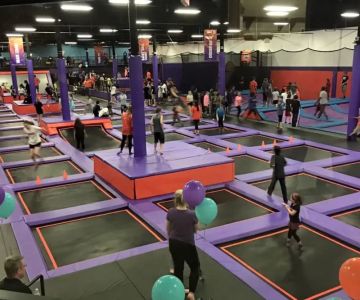
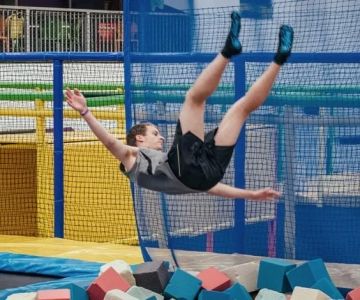
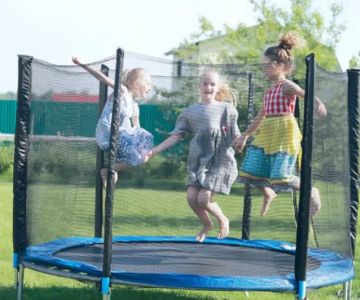

 Jump Pad Inc.0.0 (0 reviews)
Jump Pad Inc.0.0 (0 reviews)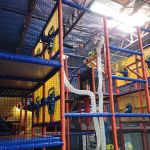 Back Creek Center4.0 (644 reviews)
Back Creek Center4.0 (644 reviews) Sky Zone Trampoline Park4.0 (733 reviews)
Sky Zone Trampoline Park4.0 (733 reviews) K1 Speed - Indoor Go Karts, Corporate Event Venue, Team Building Activities4.0 (1880 reviews)
K1 Speed - Indoor Go Karts, Corporate Event Venue, Team Building Activities4.0 (1880 reviews) East Side Park4.0 (20 reviews)
East Side Park4.0 (20 reviews) K1 Speed - Indoor Go Karts, Corporate Event Venue, Team Building Activities4.0 (1985 reviews)
K1 Speed - Indoor Go Karts, Corporate Event Venue, Team Building Activities4.0 (1985 reviews) Are Trampoline Parks Safe for Kids? Essential Guide for U.S. Parents
Are Trampoline Parks Safe for Kids? Essential Guide for U.S. Parents How Often Should You Replace Trampoline Springs? Tips for Proper Maintenance
How Often Should You Replace Trampoline Springs? Tips for Proper Maintenance How Much Is a Trampoline? A Detailed Guide to Trampoline Costs and Buying Tips
How Much Is a Trampoline? A Detailed Guide to Trampoline Costs and Buying Tips Bounce Techniques for Stronger Legs: Effective Exercises and Tips
Bounce Techniques for Stronger Legs: Effective Exercises and Tips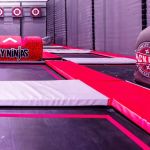 Essential Music Gear for Trampoline Dance: Complete Guide
Essential Music Gear for Trampoline Dance: Complete Guide Fun STEM Experiments Using Trampolines to Spark Curiosity and Learning
Fun STEM Experiments Using Trampolines to Spark Curiosity and Learning